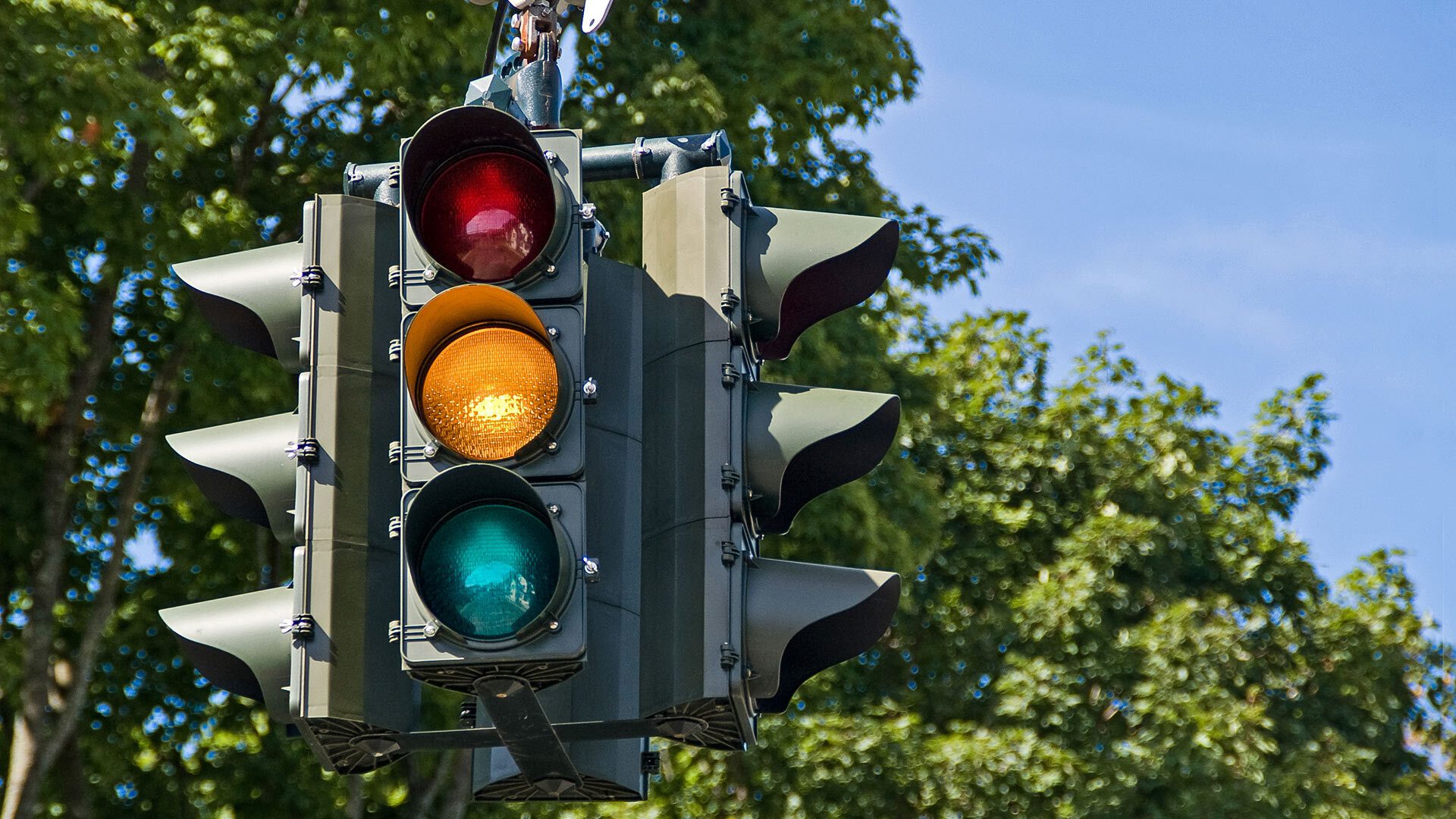- May 17, 2019
- By Robert Herschbach
It’s a situation nearly every driver knows, and dreads.
The signal at an intersection changes to yellow, but you can neither stop comfortably nor beat the red light. Slam on the brakes, and you might get rear-ended. Continue on, and you might get caught by a red-light camera—or, far worse, collide with drivers crossing in front of you.
Traffic management experts call it “the dilemma zone,” and it’s responsible for many intersection accidents, says civil and environmental engineering Professor Gang-Len Chang, who heads the Traffic Operations and Safety Lab at the University of Maryland’s A. James Clark School of Engineering. The problem is especially acute in suburban and rural areas, where speeds tend to be faster and highways often intersect with local side streets.
Starting in June, Chang will begin testing a system he and his team developed to lessen the risk at intersections in Prince George’s and Charles counties.
“If we detect that the car is traveling at a certain speed when the light turns yellow, then we know that the driver based on his or her approaching speed will not be able to stop,” Chang said. “We can configure the signal to automatically delay the green light on the side street, so the cars and pedestrians don’t enter the intersection before it is safe. And we can do this dynamically, in response to the specific conditions—if there’s no speeding car, then there’s no delay in the green.”
For more than 10 years, Chang and his team have worked to devise smart control systems to reduce accidents in the dilemma zone by configuring signals to respond dynamically to traffic with minimal hardware investment. First, Chang found a novel way to lower the risk of angled crashes caused by failure to stop for a red light by creating signals able to extend the length of the intersection’s all-red phase when needed. More recently, he turned his attention to reducing the likelihood of rear-end collisions at high-speed intersections.
Underlying his research is the fact that modern-day, wide-range signal systems are capable of pulling in significant data about traffic at an intersection, including the speed of all vehicles within the sensor’s detection zone and their distance to the intersection stop line during any time in a signal cycle. Chang developed the system at the request of state highway authorities, following public outcry over a spate of accidents—including a 2007 crash in which a speeding driver ran a red light, killing three teens. The angled-crash prevention system has been successfully deployed at three intersections in Cecil and Washington counties. Now, with his latest research, he aims to extend the concept of dynamic signal design to address the other kind of dilemma zone hazard: Sudden stops at a yellow light often result in a collision from behind.
In this case, Chang said, smart signals can either intelligently terminate the green phase at the safest time point or dynamically delay turning to yellow when they detect that a car or a platoon of vehicles is approaching too quickly.
“It represents the first intelligent signal design in the traffic control field that can concurrently protect drivers from both rear-end collision and angled crash at high-speed intersections,” he said, noting that designing signals for safety rather than mainly for traffic flow efficiency represents a paradigm shift. “Of course, tackling congestion remains a priority. But we’re seeing more interest in the use of advanced technologies to keep people safe on the roads.”
